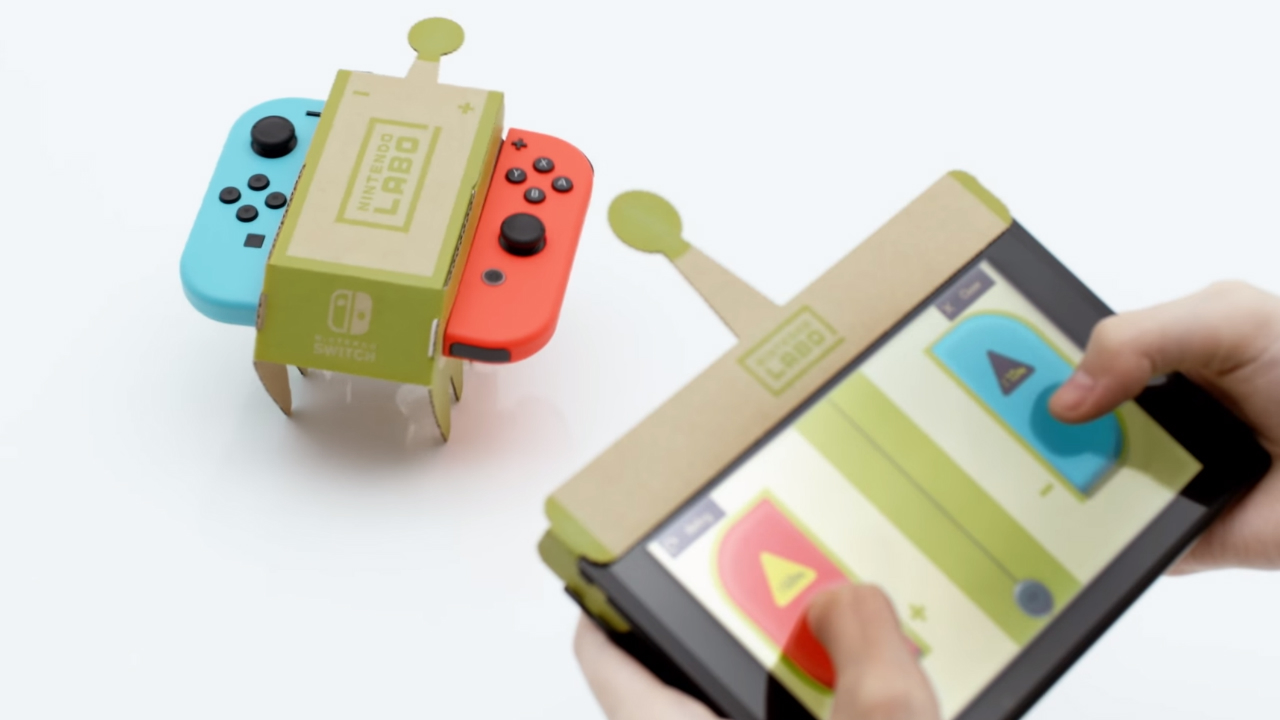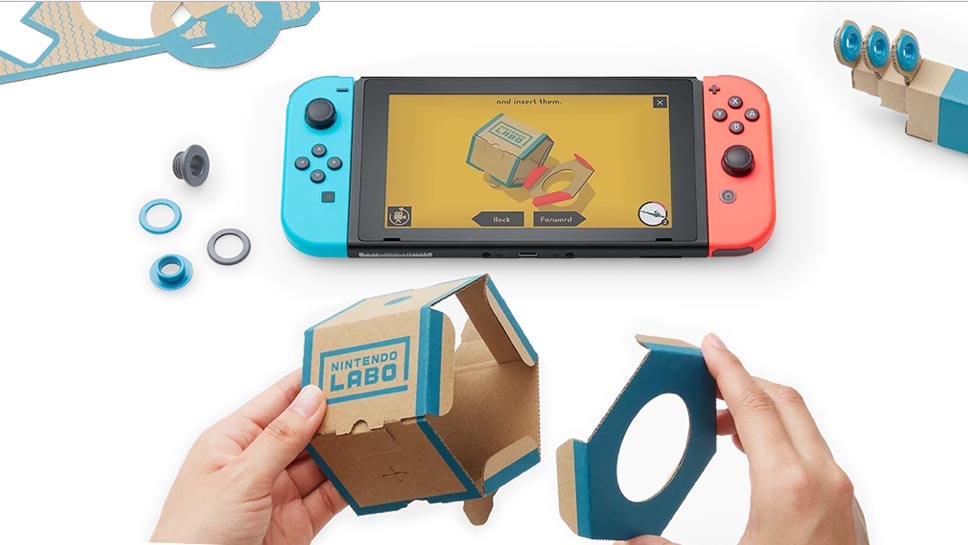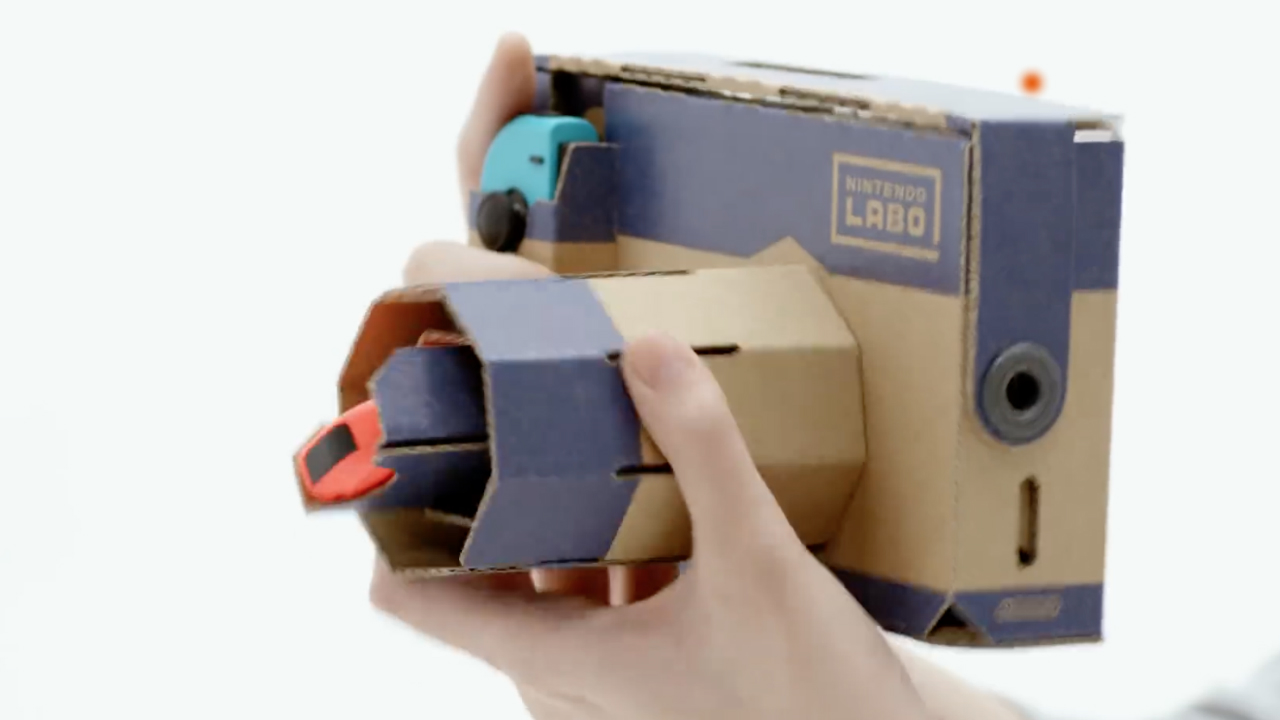It’s more than just cardboard - Here’s why Nintendo Labo is another Switch masterstroke
Nintendo’s new cardboard Switch toys are going to change the game
There are two main camps when it comes to reactions to the Nintendo Labo announcement. The (correct) ‘holy wow that looks amazing’ group and the ‘it’s just cardboard’ anti-fun party. That latter assessment seems mainly to be based on overlooking the fact the that the $69.99 Toy-Con 01 Variety Pack includes 5 unique toys and games to use them with. The Nintendo Labo's price is a touchy subject. Considering Nintendo software is horribly overpriced at the best of times (Hi Gorogoa, a $4.99 mobile game that costs $14.99 on Switch), 70 bucks for five separate games and peripherals almost feels like someone in marketing might have hit their head on the way to filling out the cost forms.
Cost and cardboard aside, it’s the ‘peripheral’ bit of all this where Nintendo has played a tactical master stroke: publishers love peripherals. Honestly, they can’t get enough of ‘em. Organisations like EA used to lie awake at night dreaming about making a few hundred thousand slightly wonky shaped, game-themed controllers at $80 a pop. From the Nintendo Zapper to dance mats and endless Collector’s Editions, games have tried to make us buy extra bits and spend more money for years. But it can be risky for them, and a bit of a pain in the ass for us - the Wii’s uDraw GameTablet basically bankrupted THQ, and everyone’s had that conversation with a cupboard of Guitar Hero controllers.

Which is why Labo is genius. Unlimited peripherals! For almost any game! That don’t cost a fortune to produce! I imagine offices around the world with high ranking video game execs slumped in their chairs, being gently fanned back to consciousness, after totting up a costing spreadsheet. And, given that currently gamers don’t appear to want to pay for anything to do with games lest it corrupt the purity of their enjoyment, people have got to make money from somewhere.
But, profit making cynicism aside, people are going to buy these things (pre-order Nintendo’s Labo here while you can). They’re cheap (five things and five games in the Variety Pack, remember), cheerful, and, because they’re sort of fun build-it-yourself events in their own right, far more enticing than any plastic record deck.
Meccano? Lego? Minecraft? People love to build their own toys, whatever the age, and Nintendo knows that. Kids will want to wave a cardboard fishing pole around because that’s what kids do. While adults will go for it because they’ve got $300 of Amiibo in a display case and it’s far too late to back down now. I’M KIDDING, they’ll do it because it’s fun as well. Even non-Nintendo lifers can see the appeal. I can not articulate how much I want to build that piano and see it play a note. I can’t really explain why, it’s just the idea of making a thing that actually does something, and has a purpose. No matter how slight. Building functional things has a far more tangible satisfaction.
Even if you’re not a Nintendo fan it’s easy to see the appeal of building your own semi-educational toys. People buy those all the time without a Switch attached so adding a playable interactive element from one of the most famous manufacturers of joy in the world isn’t exactly going to hurt the appeal. The first Labo kits are mainly more toy than education currently, but the in-game Switch tutorials highlight how things work, reinforcing basic science and engineering principles. Just building the thing is a lesson in focus and understanding. Given how much schools love to use things like Minecraft, a Switch in every classroom is basically about one well-pitched funding proposal away.

Plus, because it’s all made from cardboard, developers can throw out ideas at a low cost and high rate. Expect Nintendo to lead the way with lavishly produced steering wheels and working cameras, while indies will link to PDF templates you can print out and make from cereal boxes. The potential here is huge: not only does it unlock a whole new raft of game ideas and mechanics, limited only by what you can think of doing with the Joy-Con’s IR sensor, motion controls and haptics, but it creates a world of cheap extras that fans will hoover up. Some of it will be daft, sure, but some of it could literally be a game changer.
Sign up to the GamesRadar+ Newsletter
Weekly digests, tales from the communities you love, and more
Every year you read about some break out success at a gaming event involving a game played with an unusual controller - a racer played on a potato, or a beat-em-up controlled by telling a group of cats which one you like the most... Labo takes that mad, beautiful sense of experimentation, unfettered by controller conventions, out of the fringe and into the home. Sure, giving kids fun things to make and do is the main focus, but this is a whole new frontier for game design, much like mobile gaming or the Switch itself, promising a whole new world of who knows what - just imagine a 1-2 Switch sequel enhanced with Labo extras. And, if someone has to buy a $80 cardboard robot to make that happen, so be it.

I'm GamesRadar's Managing Editor for guides, which means I run GamesRadar's guides and tips content. I also write reviews, previews and features, largely about horror, action adventure, FPS and open world games. I previously worked on Kotaku, and the Official PlayStation Magazine and website.



